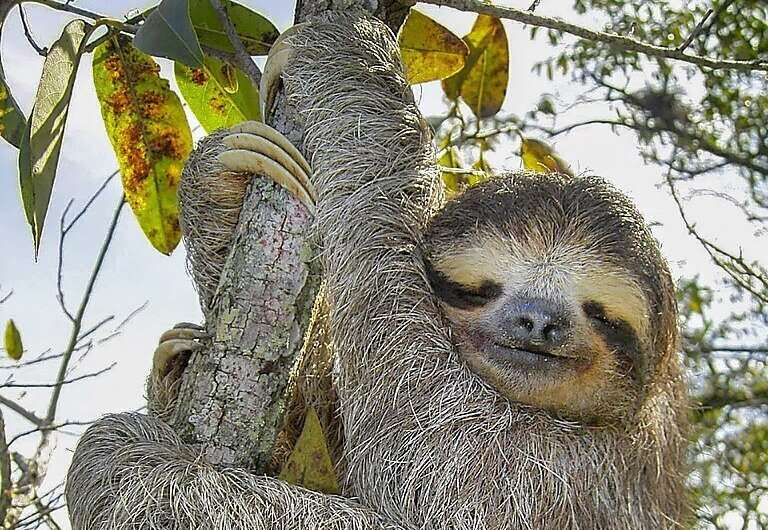January 17, 2023 report
This article has been reviewed according to Science X's editorial process and policies. Editors have highlighted the following attributes while ensuring the content's credibility:
fact-checked
peer-reviewed publication
trusted source
proofread
Measuring the enduring grip strength of the brown-throated sloth

A small team of researchers from the New York Institute of Technology College of Osteopathic Medicine, working with one colleague from the Cahuita Sloth Sanctuary in Costa Rica and another from Youngstown State University, has found that the brown-throated sloth has a powerful grip. In their paper published in the Journal of Zoology, the group describes how they measured the grip strength of several sloths and what they found by doing so.
Sloths are known for moving very slowly, which prior research has shown is a means for surviving on a diet of nothing but tree leaves. Prior research has also shown that sloths spend most of their existence hanging from tree limbs, though not always in the same way. A sloth can hang using any one of its paws, or by using combinations of them. They hold on tight, even when sleeping. In this new study, the researchers sought to learn more about grip strength in one type of sloth—the brown-throated sloth.
The brown-throated sloth is similar in size and weight (42 to 80 cm tall and weighing on average 2.25 to 6.3 kg) to other sloths, and lives in forested parts of Central and South America. These sloths also have four limbs, described as arms, each with three fingers and long claws. To determine the strength of the sloths' grip, the researchers built and used a support device with a pair of semi-circular prisms up top and a medium-load force plate on the bottom. Five sloth individuals were tested.
Reviewing their data, the researchers found that the sloth grip is approximately twice that of humans and many other primates. They also found that the sloths were capable of holding more than 100% of their own body weight with just one hand. The researchers were also surprised to discover that the sloths all demonstrated left-handedness. On average there was a 16% difference in strength between left- and right-grip strength, most particularly in their hands.
The researchers acknowledge that they may have erred in their measurement approach—the sloths may have chosen to ease up to mollify the researchers before they used their full strength. The researchers also acknowledge that there have been instances where sloths have been found hanging from a limb with their skin torn from their bodies by a predator.
More information: M. W. Young et al, Grip it good: in vivo grip force across substrate diameters in the brown‐throated three‐toed sloth (Bradypus variegatus), Journal of Zoology (2022). DOI: 10.1111/jzo.13041
Journal information: Journal of Zoology
© 2023 Science X Network



















